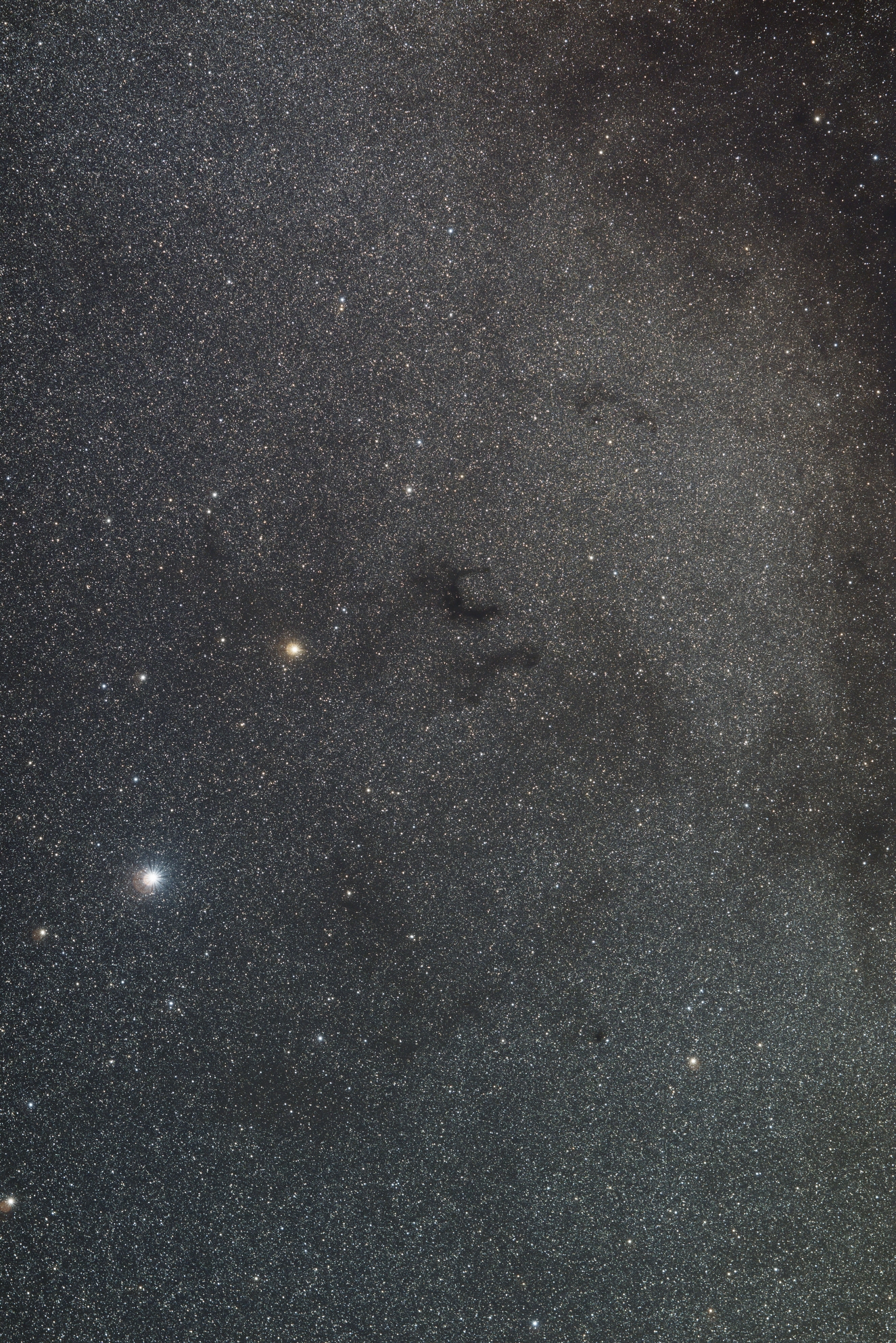
Move your mouse over the image above (on smartphones or tablets: touch it) to get a version with constellation lines, deep-sky objects and labels drawn.
Aquila, which lies in the Milky Way, contains rich starfields. The northern part of the constellation is filled with nebulae, designated B (for Barnard's Dark Nebulae catalog) or LDN (for Lynds' catalog of Dark Nebulae) in the mouse-over image above. Probably the most prominent one is "Barnard's E" nebula (designated Barnard 142 and 143), located about 2 degrees northwest of Altair, α Aql, the constellation's brightest star. The "E" is a clearly defined dark area on a background of many colorful Milky Way stars. It has an apparent diameter of about 0.5 degrees, about the size of the full moon in the the sky. Its distance from Earth has been estimated at about 2,000 light-years.
Non-nebular objects in this image are NGC 6828 and NGC 6840, two asterisms of stars; NGC 6837, an open star cluster; and three planetary nebulae: NGC 6803, NGC 6804 and NGC 6807.
 Barnard 142/143 - E Nebula, Wright-Newtonian CCD-image.
Barnard 142/143 - E Nebula, Wright-Newtonian CCD-image.
Exposure Data